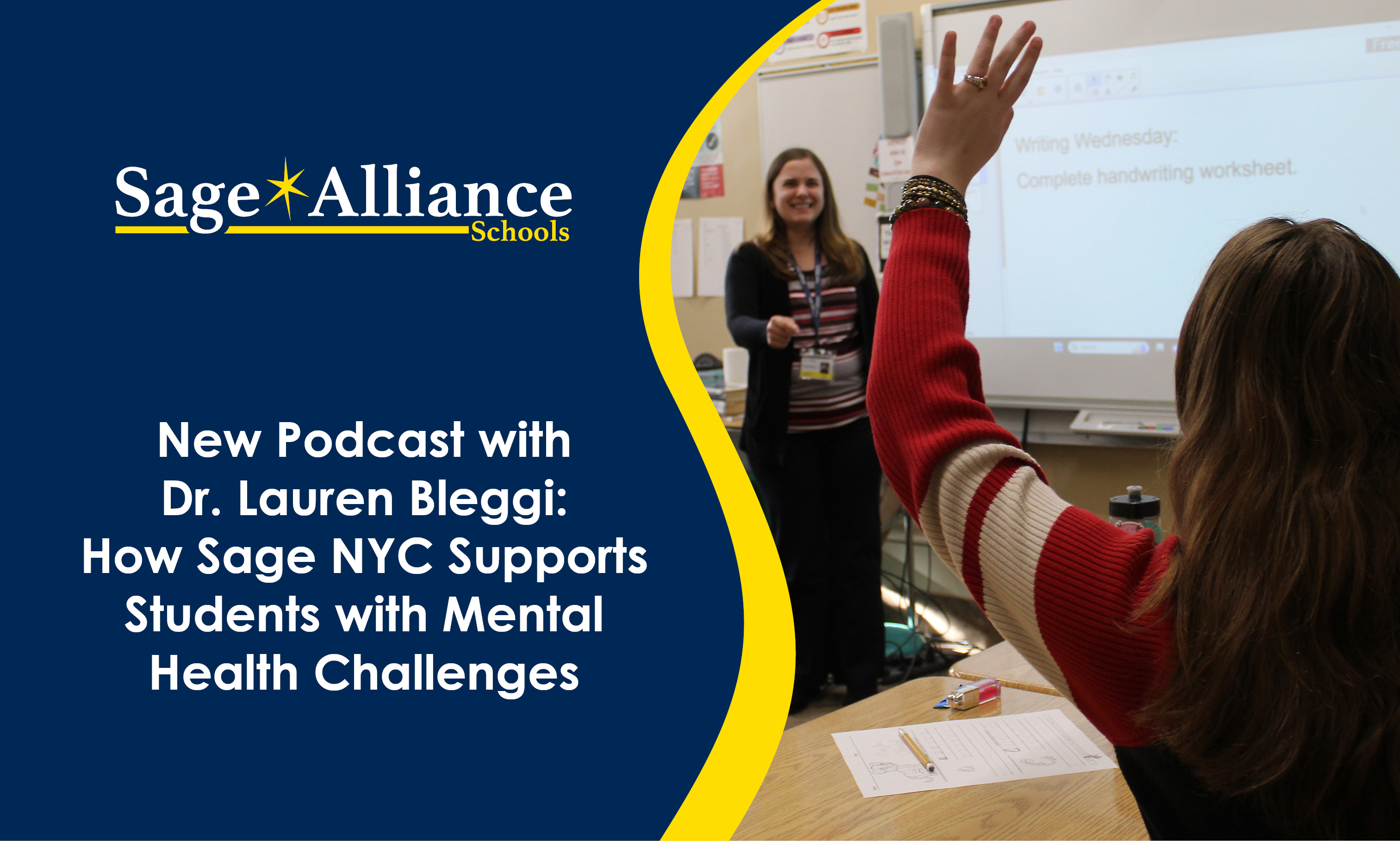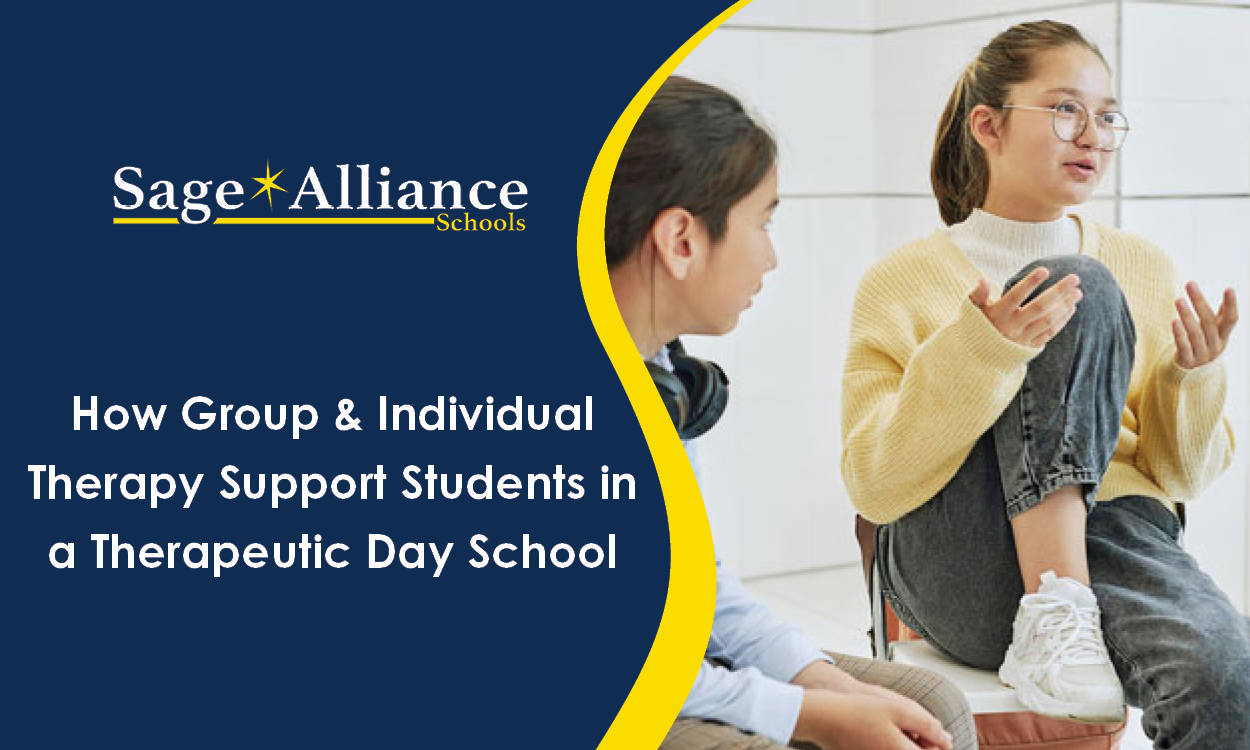6 Signs a Child Might Need a Therapeutic School
Posted: February 17, 2015 | Written By: Justin Gerwick | Category: Therapeutic Education

By Christopher J. Leonard, LCSW, M.Ed
I am often asked how students come to be placed at Sage Alliance. Sometimes the reasons for placement are quite clear. Self-harming behavior, suicidal ideation, frequent psychiatric hospitalizations, or other emotional traumas are among the most common factors that lead to placement. However, there are frequently more subtle indications that a student may need the support of a therapeutic school program. Any combination of the following six signs may signal a need for a therapeutic school or school-based therapeutic services.
Warning Sign #1:
The student experiences anxiety, depression or other symptoms that continue to disrupt school functioning despite a sustained course of psychotherapy and/or medication. Many students who suffer from anxiety, depression, obsessive thoughts or other psychological issues show improvement with a sustained course of weekly or semi-weekly psychotherapy, often paired with the right course of medication.
School can often be the first place where symptoms present themselves, and if the interventions are working, an improvement in schoolwork, attendance and/or behavior generally follows. However, when school functioning does not improve, the student will likely benefit from the availability of in-school therapy.
Some students can receive the support they need with regular therapy provided in their public school as is provided by Sage In-District Services. Others need the support of a small, intensive therapeutic milieu such as one of the Sage Alliance schools.
Warning Sign # 2:
The student makes frequent visits to the school nurse or misses significant instructional time due to somatic or emotional complaints that do not have a clearly defined medical or physical origin. Of course, the first step with a student who frequently seeks out the school nurse is to rule out a diagnosable medical condition and/or substance abuse. School professionals should coordinate with parents to ensure that the student receives a comprehensive medical evaluation to identify and treat or rule out a medical condition or substance abuse.
When medical evaluation reveals no underlying medical or substance-related cause, emotional factors must be considered. Students who frequent the nurse’s office presenting with somatic complaints, seeking to “just lie down,” or gain permission to go home may be suffering from depression, anxiety or other emotional issues that are preventing them from attending to learning.
Although the respite provided by the visit to the nurse may provide temporary relief, it cannot help these students work through the emotional issues that are interfering with school functioning. These students will have a much better chance of recovery and improved school performance with the availability of regular therapy sessions and as-needed crisis intervention during the school day.
Warning Sign #3:
The student has increasing absences or stops coming to school at all. Attendance problems can signal a need for therapeutic intervention. As with frequent visits to the school nurse, parents of students with frequent absences should pursue comprehensive medical evaluation to identify and treat any medical conditions or substance abuse. Here again, once medical conditions or substance abuse are ruled out, it is essential to address emotional factors.
A student may be suffering from anxiety about a situation at school or from depression that makes getting out of bed feel impossible. At times, a student may feel a concern for a parent or relative that makes him or her believe he or she must stay home. When an attendance problem becomes entrenched in the form of school avoidance or school refusal, it takes a sustained, concerted effort by a team of professionals to get the student back to regular school attendance.
Frequently, both individual and family interventions are needed to help get the student back on track. This is where an in-district therapeutic program or therapeutic school can be invaluable. Even if a student is simply truant, therapeutic intervention can strongly complement legal intervention.
Warning Sign #4:
The student is socially isolated or socially withdrawn. A student may become socially isolated or withdrawn for many reasons. The student may be a target of overt bullying, which is more common for boys, or subtle social isolation, more common in girls.
In Odd Girl Out (2011, Mariner Books) Rachel Simmons details how adolescent girls can very quietly but very deliberately ensure that a girl is shut out of their social circle. A student may also become isolated due to immaturity, social awkwardness, chronic peer conflict, or internal thoughts or emotions that make the student extremely hesitant to interact with peers.
In any of these cases, placement in a small, supportive therapeutic community can help the student gain confidence and form new relationships while working in therapy to address the issues underlying the social isolation. The therapeutic school serves as a comprehensive treatment setting in which problems that arise during the school day can be addressed on the spot.
Warning Sign # 5:
The student experiences a sudden drop in grades. As noted above, when a student is emotionally troubled, school is often the first place where difficulties emerge.
When a generally successful student suddenly stops turning in homework, does poorly on tests, stops participating in class, or becomes apathetic about school, it is important for parents and school professionals to assess what is behind the drop in performance. Declining performance may be a sign of depression, anxiety or some other issue that the student is not talking about with anyone.
If parents and school professionals have attempted to discuss the situation with the student without identifying helpful steps to take, referral to outpatient therapy may be a helpful next step. Once the student is referred to therapy, parents and school need to monitor progress closely, maintain communication with the outpatient therapist and be prepared to consider therapeutic school placement if improvement does not ensue.
Warning Sign # 6:
The student exhibits a sudden change in disposition. Not all students who suffer from depression, anxiety and other emotional issues exhibit the classic signs of these ailments. A sudden increase in irritability may be a sign of an agitated form of depression. A usually quiet student who suddenly becomes flamboyantly outgoing may be exhibiting the manic phase of a mood disorder.
The socially adept student who withdraws may be experiencing depression or intrusive thoughts. A student who exhibits extremes in behavior between home and school may be working overly hard to contain emotions and behaviors in one setting only to discharge these emotions and behaviors in the other. Depending on the symptomatology, therapeutic school placement may be a strong treatment alternative.
Adolescents are in a stage of developmental transition, so it is important not to jump to conclusions. But it is important to monitor sudden changes in disposition and to be alert for other warning signs that point to the need for intervention. I hope this overview of warning signs will help parents and professionals recognize some of the indicators that suggest therapeutic school placement.
It is important to emphasize that early intervention with any of these signs may help forestall the need for placement or shorten the length of placement needed to correct the issues at hand.
Want to be notified of new articles and resources from Sage Alliance? Click here to submit your email and opt into our newsletter.









